Understanding the Basics of Wooden Floor Sanding Services in London
Wooden floor sanding is a crucial process for both home and business owners in London. It involves removing the top layer of a wooden floor to restore its original beauty and condition. This process is important because it helps to eliminate imperfections, scratches, and other damage that may have accumulated over time. By sanding the floor, it can look like new again and be protected from further wear and tear.
The benefits of wooden floor sanding for home and business owners are significant. it improves the overall appearance of the floor, making it more visually appealing. This can enhance the aesthetics of a space and create a positive impression on visitors or customers. Additionally, sanding increases the durability and longevity of the floor, ensuring it can withstand daily use and foot traffic. It also helps to reduce the accumulation of dust and dirt, making it easier to clean and maintain the floor.
In London, there are various types of wooden floor sanding services available. The most common type is the use of belt sanding machines, which are suitable for larger areas like schools, gyms, and industrial buildings. Another option is the TRIO three-disk sanding machine, which is ideal for smaller areas such as wooden staircases. Additionally, the ELF drum sanding machine is available for specific sanding needs.
Overall, wooden floor sanding services in London offer numerous benefits for home and business owners. It restores the beauty of the floor, increases its durability, and makes it easier to clean and maintain. With different types of sanding machines available, professionals can cater to various needs and ensure the best results for our clients.
The Importance of Choosing the Right Wooden Floor Sanding Service
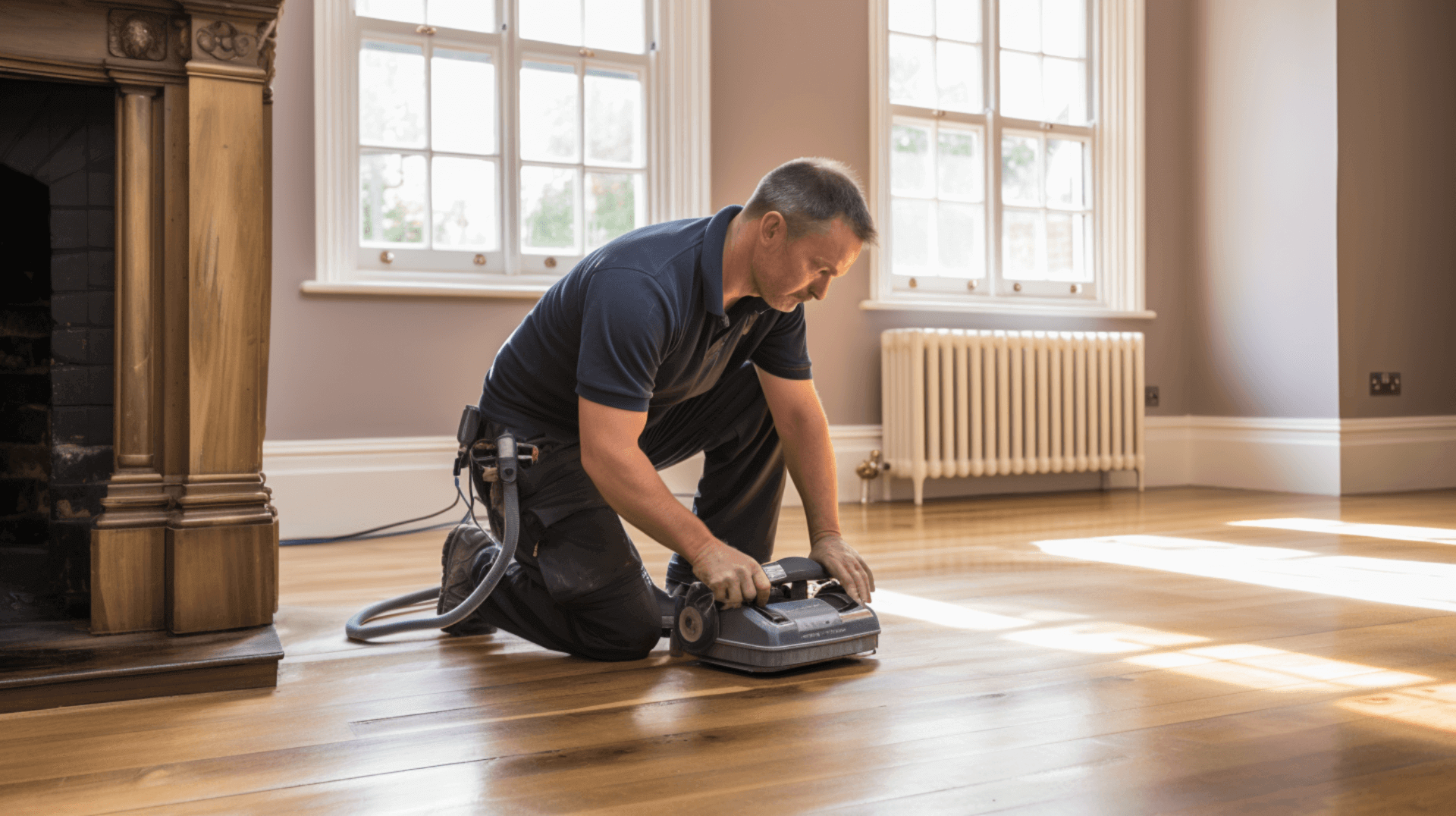
Choosing the right wooden floor sanding service is essential for home and business owners in London. It is important to consider a number of factors when selecting a service, such as the type of flooring, the size of the area, the desired finish, the experience and reputation of the company, and the cost of the service. Additionally, it is important to consider the type of wooden flooring, as hardwood floors require a different approach than softwood floors. The type of finish desired can also influence the choice of service, as some services may offer a more natural finish, while others may offer a more polished finish.
There are various types of sanding techniques available, each of which can have a different impact on the final result. For example, belt sanding is suitable for larger areas, while drum sanding is better for smaller areas. Additionally, orbital sanding is suitable for more intricate areas, while hand sanding is better for more detailed work. It is also important to consider the environment in which the floor is located, as suspended timber floors located above an unheated space require thermal upgrades (insulation) when installed below the floorboards or timber decking. Similarly, timber floors situated above an unheated integral garage may require additional considerations.
By taking these factors into account and selecting a service provider that is experienced and knowledgeable in the specific requirements of the flooring, home and business owners can ensure that their wooden floors are restored to their desired finish and condition.
Preparing Your Space for Wooden Floor Sanding

Preparing a space for wooden floor sanding is an important step for home and business owners in London. It is crucial to take the necessary steps to ensure the process is carried out safely and efficiently. all furniture and other items should be removed from the room to prevent any damage during the sanding process. It is also recommended to cover any remaining items with protective sheets or blankets to prevent dust and debris from settling on them.
To protect the surrounding areas from dust and debris, it is advisable to seal off the room with plastic sheeting. This will help contain the dust and prevent it from spreading to other rooms. Using a dust extraction system during the sanding process can further minimize the amount of dust in the air. Additionally, it is important to ensure that the sanding machine is in good working order and that the operator is wearing the necessary protective equipment.
Before sanding, it is essential to inspect the floor for any signs of damage, such as cracks or splits. This will help identify any areas that may require additional attention or repairs. It is also important to check the moisture content of the timber joists and ensure they are free from infestation and rot.
By following these precautions and taking the necessary steps to prepare the space, home and business owners can ensure a safe and successful wooden floor sanding process.
The Wooden Floor Sanding Process Explained
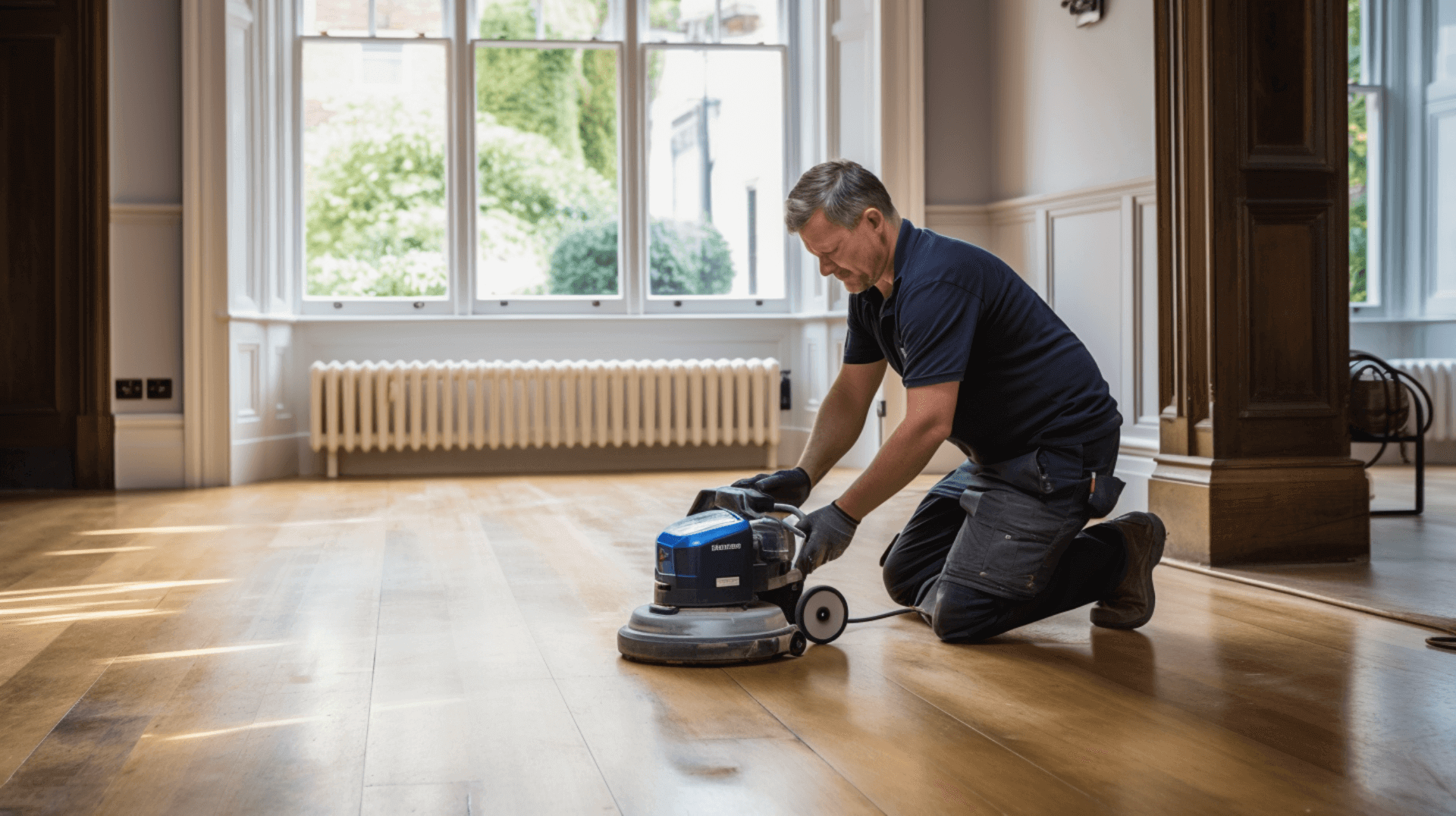
The wooden floor sanding process is an important step for home and business owners in London. It involves a series of steps to ensure the floor is restored to its desired condition and finish. The process typically begins with an inspection of the floor to identify any areas that may require additional attention or repairs, such as sources of dampness and fungal growths. This includes probing with a sharp implement, like a bradawl, to detect internal decay in large-section timbers and checking areas where timbers enter walls for localized decay.
Once the necessary preparations have been made and any inaccessible areas have been explained to the customer, the sanding process can begin. This typically involves using a variety of equipment, such as belt sanders, drum sanders, orbital sanders, and other tools like miter saws, table saws, chisels, and nail sets. These tools help to achieve a smooth and even surface by removing old coatings, imperfections, and leveling the floor.
It is important to note that the sanding process should be carried out by professionals who have experience and knowledge in handling different types of wood and using the appropriate equipment. This ensures that the floor is properly restored and achieves the desired finish. Additionally, any specific safety considerations recommended by the manufacturer of the equipment should be followed to ensure a safe working environment.
By following these steps and working with experienced professionals, home and business owners can ensure that their wooden floors are restored to their desired condition and finish.
Understanding the Role of Finishes in Wooden Floor Sanding
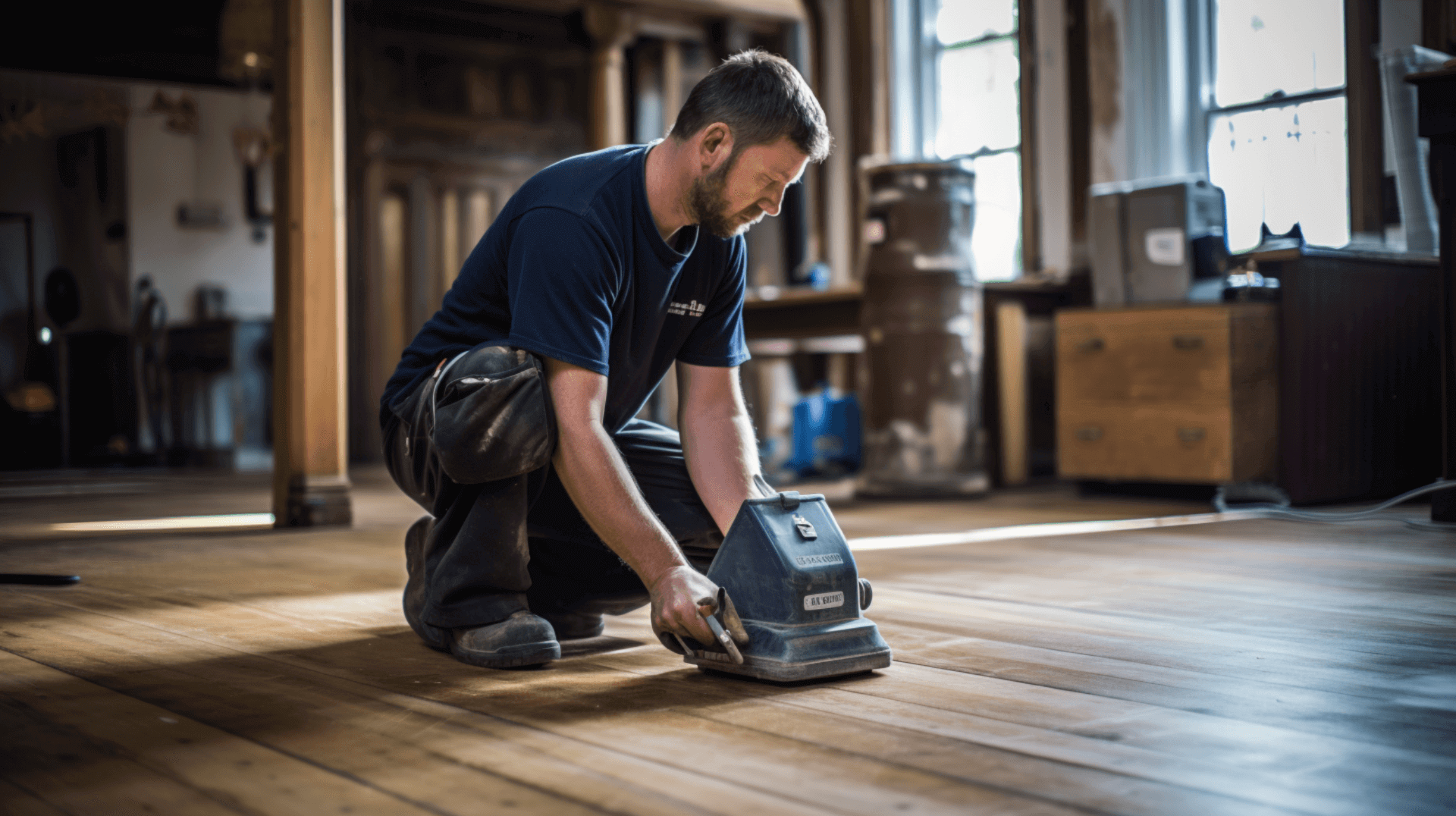
Understanding the role of finishes in wooden floor sanding is essential for home and business owners in London. Finishes are applied to the floor after the sanding process to protect the wood and enhance its appearance. There are a variety of finishes available, such as oil-based, water-based, and wax-based finishes. Each type of finish has its own advantages and disadvantages, and the choice of finish should be based on the desired look and durability of the floor.
Oil-based finishes are the most popular choice for wooden floors, as they provide a natural look and are highly durable. They are also easy to apply and maintain, and can be used on both hardwood and softwood floors. Water-based finishes are also popular, as they are quick drying and provide a more modern look. Wax-based finishes are best suited for softer woods, as they provide a more traditional look and are easy to apply and maintain.
The application of the finish typically involves a series of steps, such as cleaning the floor, applying the finish, and buffing the floor. It is important to follow the manufacturer’s instructions when applying the finish, as this will ensure the best results. Additionally, it is important to ensure that the finish is applied evenly and that the floor is buffed to a smooth finish. This will help achieve a professional and polished look.
Before applying the finish, it is also important to check for any pre-existing problems on the floor, such as cracks or splits. These issues should be addressed and repaired before applying the finish to ensure a smooth and even surface. By taking these steps and choosing the right finish for their wooden floors, home and business owners can achieve a beautiful and long-lasting result.
The Importance of Regular Maintenance After Wooden Floor Sanding
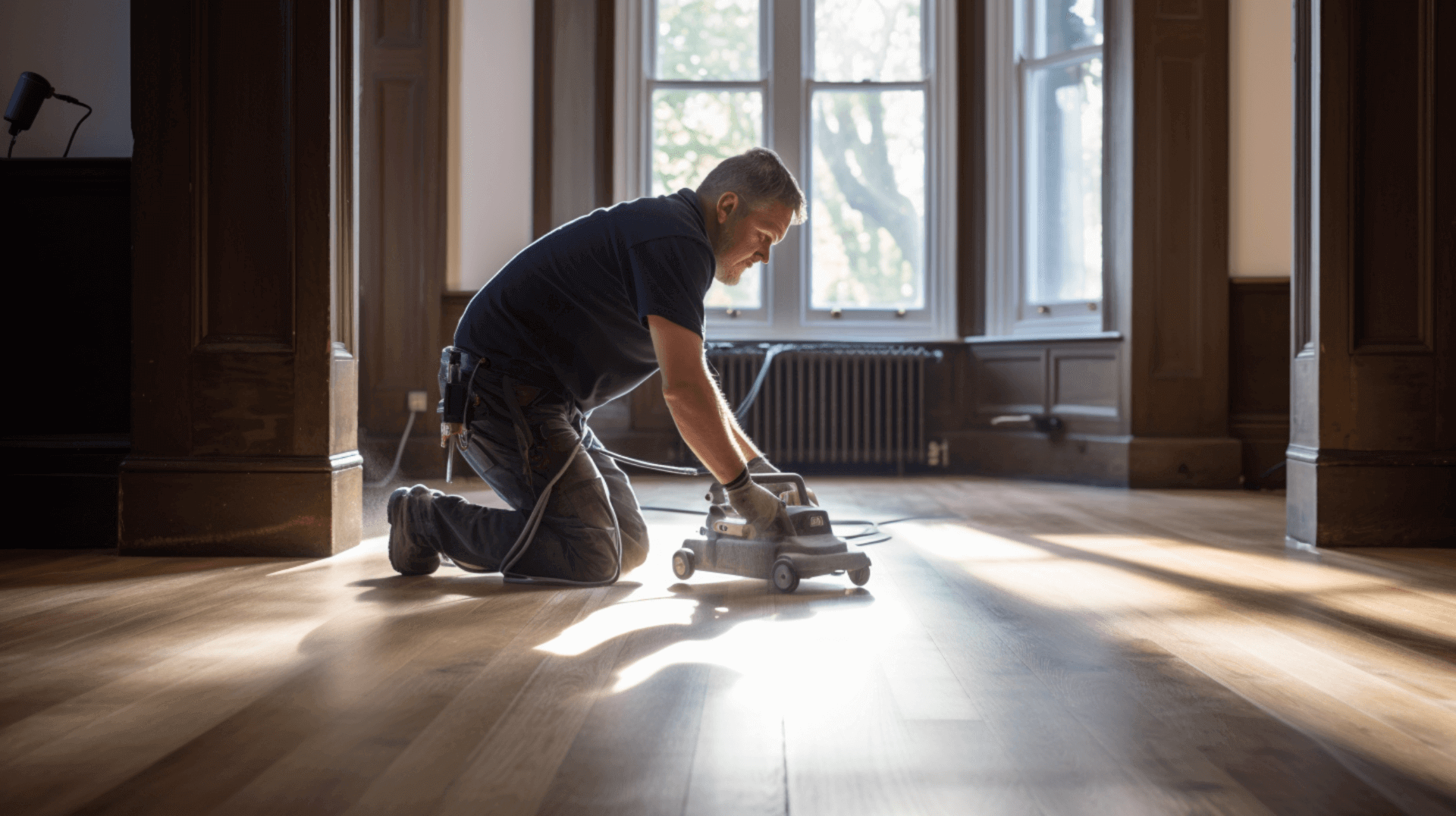
Regular maintenance is essential for home and business owners in London after wooden floor sanding. This helps to ensure that the floor is kept in good condition and that it retains its desired look and finish.
The first step in maintaining a wooden floor is to regularly clean it with a vacuum cleaner or a soft-bristled broom. This helps to remove any dirt and debris that may have accumulated on the floor. Additionally, it is important to use a damp mop to clean the floor on a regular basis. This helps to remove any dirt and dust that may have been missed by the vacuum cleaner.
It is also important to check the floor regularly for any signs of damage, such as cracks or splits. If any damage is found, it should be addressed and repaired as soon as possible to prevent further damage. Additionally, it is important to check the moisture content of the timber joists and ensure they are free from infestation and rot. Visual inspection of all of the floor timbers near actual or potential sources of dampness, and any showing evidence of fungal growths should be carried out. Repairs may be required to facilitate the installation of insulation or to address any defects or additional ventilation needs, such as water or condensate pipes in the subfloor.
By regularly cleaning the floor, addressing any damage promptly, and ensuring the timber joists are in good condition, home and business owners can maintain the longevity and appearance of their wooden floors after sanding.
The Cost Implications of Wooden Floor Sanding Services
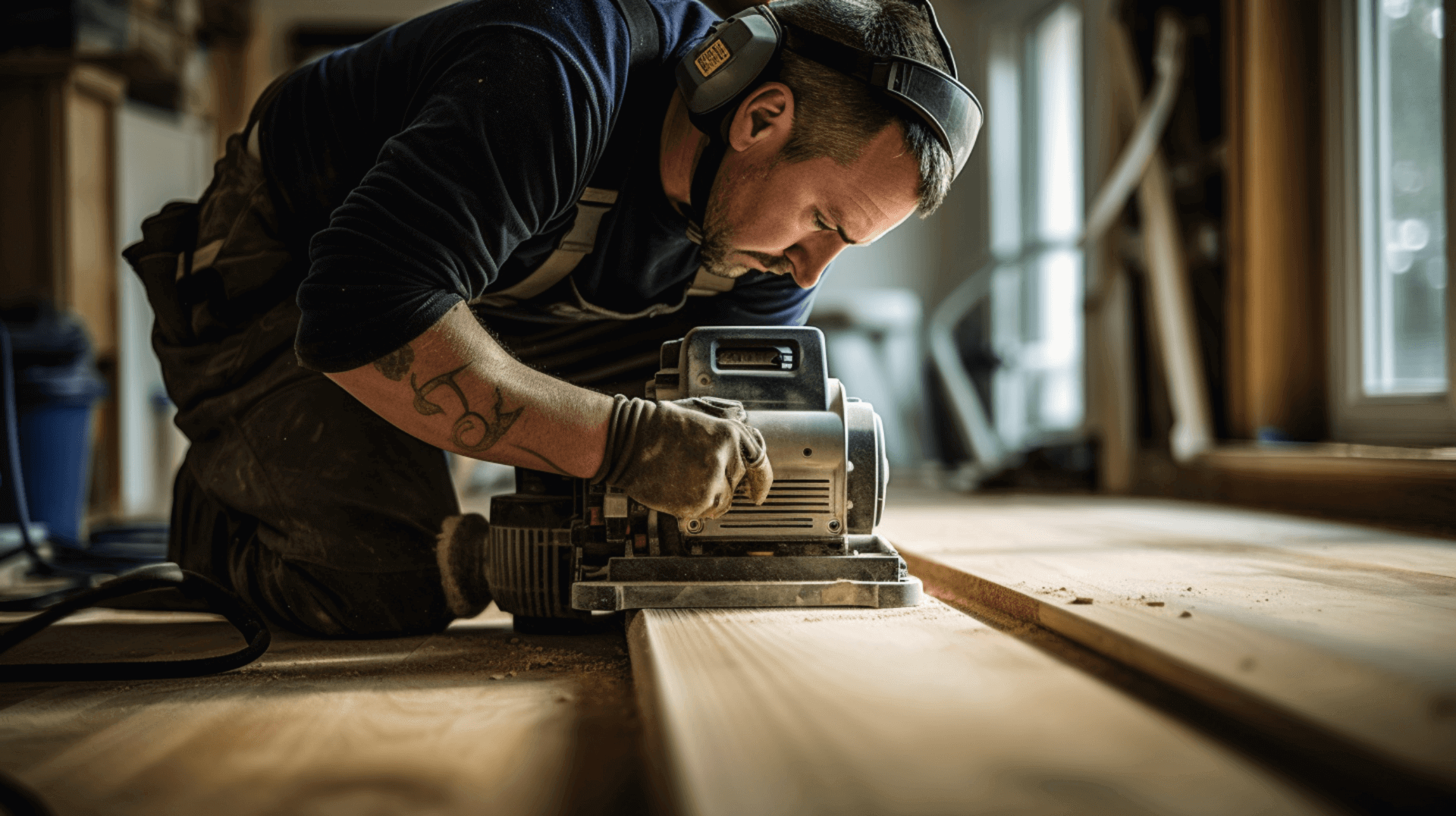
The cost of wooden floor sanding services can vary depending on several factors, including the size and condition of the floor, the type of finish used, and the complexity of the job. Larger floors and floors in poor condition may require additional time and materials, which can increase the overall cost. Additionally, if there are any defects or damage that need to be repaired, such as providing additional ventilation or making good any damage caused, this will also add to the cost.
The type of finish chosen for the floor can also impact the cost. Oil-based finishes, while popular for their natural look and durability, tend to be more expensive than water-based or wax-based finishes. It’s important to consider the desired look and durability when selecting a finish, as this can affect the overall cost.
Furthermore, compliance with relevant building regulations may be necessary to improve the thermal performance of a suspended timber floor. This could involve additional measures or treatments, which may increase the cost.
Overall, home and business owners in London should consider the size and condition of the floor, the type of finish desired, any necessary repairs or treatments, and compliance with building regulations when estimating the cost of wooden floor sanding services. By taking these factors into account, we can make informed decisions and ensure the best outcome for our floors.
The Role of Professionalism in Wooden Floor Sanding Services
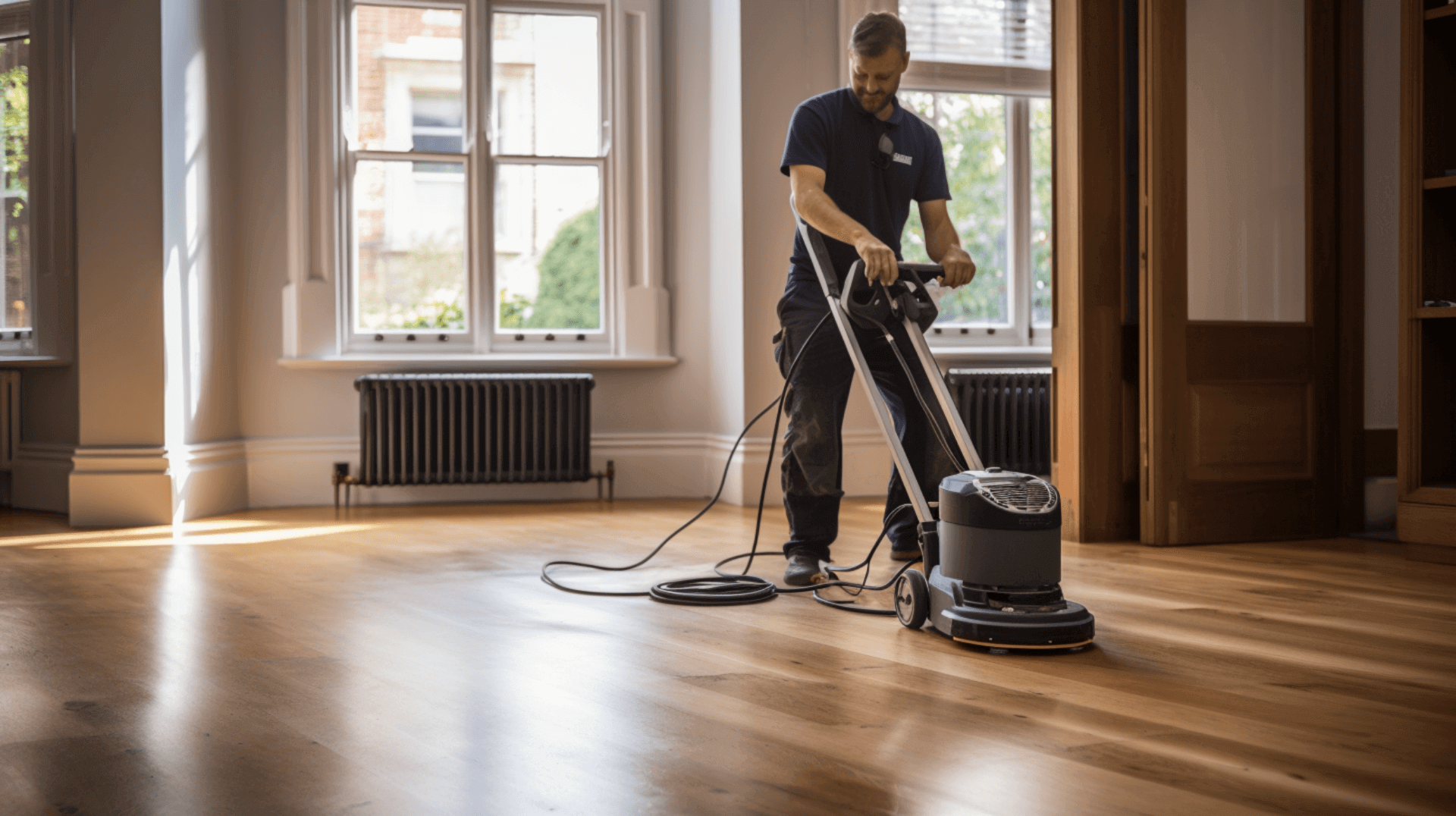
Hiring a professional wooden floor sanding service like GJP Floor Sanding is essential for home and business owners in London. Professionalism and quality are key factors in ensuring the best outcome for the floor, and GJP Floor Sanding provides both.
GJP Floor Sanding has a team of experienced and qualified professionals who are dedicated to providing the highest quality of service. We use the latest equipment and techniques to ensure that the floor is sanded to the highest standard. Additionally, we use dust-free sanding machines to minimize the amount of dust created during the process. GJP Floor Sanding also offers a range of finishes to suit the desired look and durability of the floor. We use only the highest quality products and finishes, and we are experienced in applying the finish evenly and buffing the floor to a smooth finish.
GJP Floor Sanding also takes the necessary steps to ensure that the floor is in good condition before sanding. We conduct a thorough visual inspection of all of the floor timbers near actual or potential sources of dampness, and any showing evidence of fungal growths. We also investigate by probing with a sharp implement, like a bradawl, to identify any hidden defects or damage that may affect the sanding process. By addressing these issues before sanding, GJP Floor Sanding ensures that the floor is prepared properly and that the sanding process will yield the best results.
Overall, hiring GJP Floor Sanding guarantees professionalism, quality, and customer satisfaction. Our expertise, use of advanced techniques, commitment to customer service, and thorough preparation process set us apart from other service providers in London.
Addressing Common Concerns About Wooden Floor Sanding
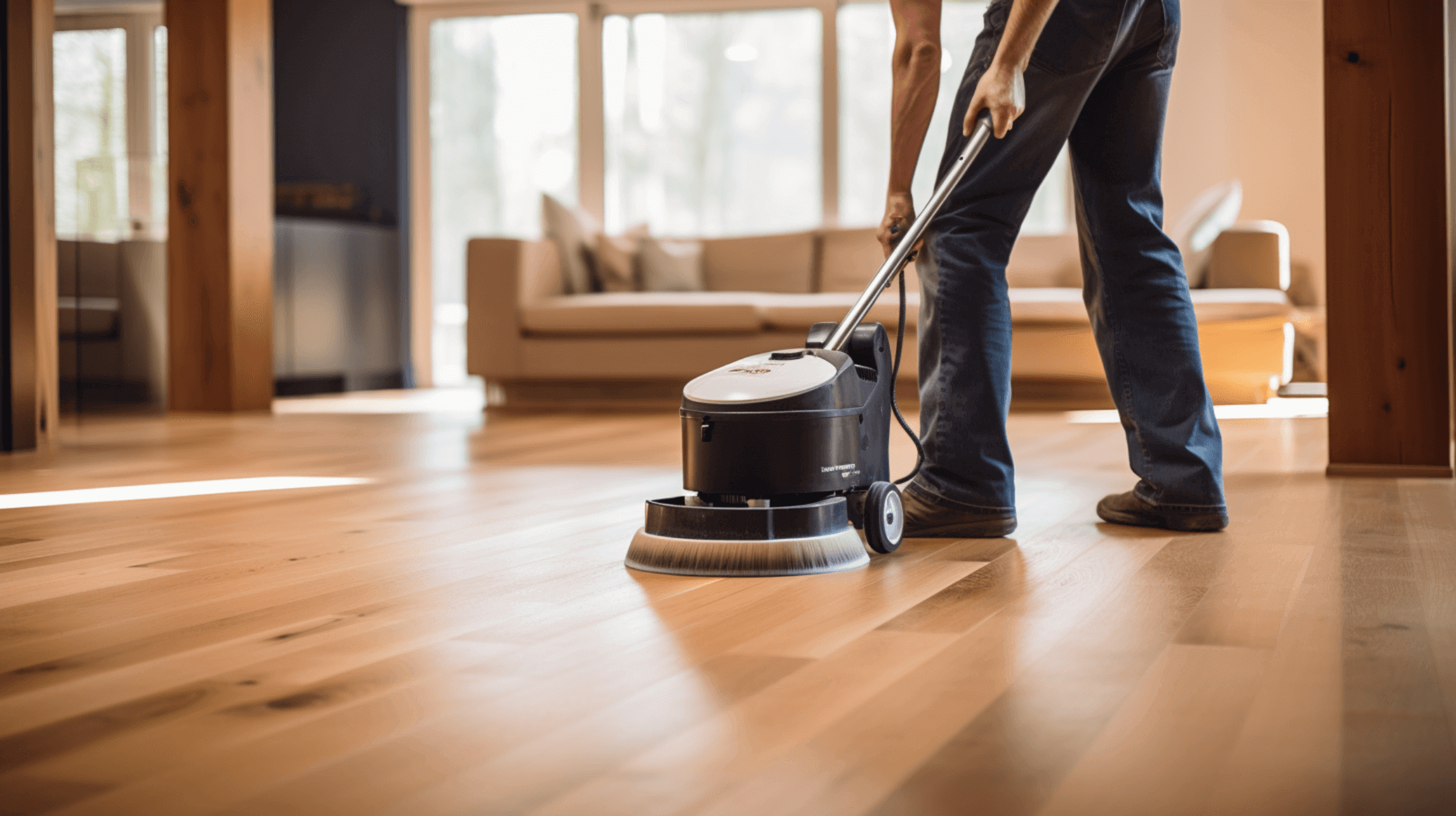
GJP Floor Sanding understands the common concerns that home and business owners in London have about dust and noise during the sanding process. To address these concerns, we use the latest dust-free sanding machines to minimize the amount of dust created during the process. Additionally, we use noise-reducing equipment to ensure minimal disruption during the sanding process. We also put down dust sheets to protect the customer’s property and clear up any mess as soon as possible. All packaging and waste materials are disposed of in the appropriate manner after the completion of the works.
Furthermore, GJP Floor Sanding takes the necessary steps to ensure that the floor is in good condition before sanding. We conduct a thorough visual inspection of all of the floor timbers near actual or potential sources of dampness, as well as any showing evidence of fungal growths. We also probe with a sharp implement, like a bradawl, to identify any hidden defects or damage that may affect the sanding process. Additionally, we check for water or condensate pipes in the sub-floor voids and address any repairs that may be required to facilitate the installation of insulation. This ensures that the floor complies with relevant building regulations and improves its thermal performance.
GJP Floor Sanding prioritizes customer satisfaction and takes every precaution to address concerns about dust, noise, and potential damage during the sanding process. Our use of dust-free sanding machines, noise-reducing equipment, thorough inspections, and compliance with building regulations sets us apart in providing a professional and considerate service to our customers.
The Environmental Impact of Wooden Floor Sanding

GJP Floor Sanding takes measures to minimize waste during the sanding process. We ensure that the finish is applied correctly and evenly, avoiding any excess material that could be wasted. Additionally, we conduct a thorough visual inspection of the floor timbers, specifically focusing on areas near dampness or fungal growth. By identifying any hidden defects or damage that may affect the sanding process, we can address these issues beforehand, reducing the need for additional materials and minimizing waste.
Furthermore, GJP Floor Sanding goes beyond visual inspections and also probes with a sharp implement, such as a bradawl, to identify any hidden defects or damage. This meticulous approach allows us to address any potential issues that may impact the sanding process, ensuring that the floor is properly prepared and minimizing the need for excessive materials.
In addition to waste reduction measures, GJP Floor Sanding also checks for water or condensate pipes in the sub-floor voids. This step is taken to facilitate the installation of insulation and improve the floor’s thermal performance, ensuring compliance with relevant building regulations. By considering these factors, GJP Floor Sanding not only provides high-quality sanding services but also contributes to the overall sustainability and efficiency of the floor.
Overall, GJP Floor Sanding’s attention to detail, thorough inspections, and proactive approach to addressing potential issues allow us to minimize waste during the sanding process. Our commitment to waste reduction aligns with our goal of providing environmentally friendly services to our customers.
Insights from GJP Floor Sanding Experts

GJP Floor Sanding experts have a wealth of experience and knowledge when it comes to maintaining wooden floors. We recommend regular cleaning and vacuuming to remove dirt and debris, as well as using a damp mop to remove any stubborn stains. Additionally, we suggest using a wood floor cleaner to keep the floor looking its best.
When it comes to sanding, GJP Floor Sanding experts advise against using too much pressure or sanding too deeply, as this can damage the floor. We also recommend avoiding the use of harsh chemicals or abrasive materials, as these can damage the floor’s finish. Additionally, we suggest avoiding the use of steam cleaners, as this can cause the wood to swell and warp.
Furthermore, GJP Floor Sanding experts suggest checking for water or condensate pipes in the sub-floor voids and addressing any repairs that may be required to facilitate the installation of insulation. This ensures that the floor complies with relevant building regulations and improves its thermal performance.
Finally, GJP Floor Sanding experts recommend using a protective finish to prolong the life of the floor. This finish will help protect the floor from scratches, scuffs, and other damage. Additionally, we suggest using furniture pads or felt protectors to prevent scratches and dents caused by furniture.
By following these tips and recommendations from GJP Floor Sanding experts, home and business owners can effectively maintain our wooden floors and ensure our longevity and beauty for years to come.
Contact GJP Floor Sanding for Professional Wooden Floor Sanding Services
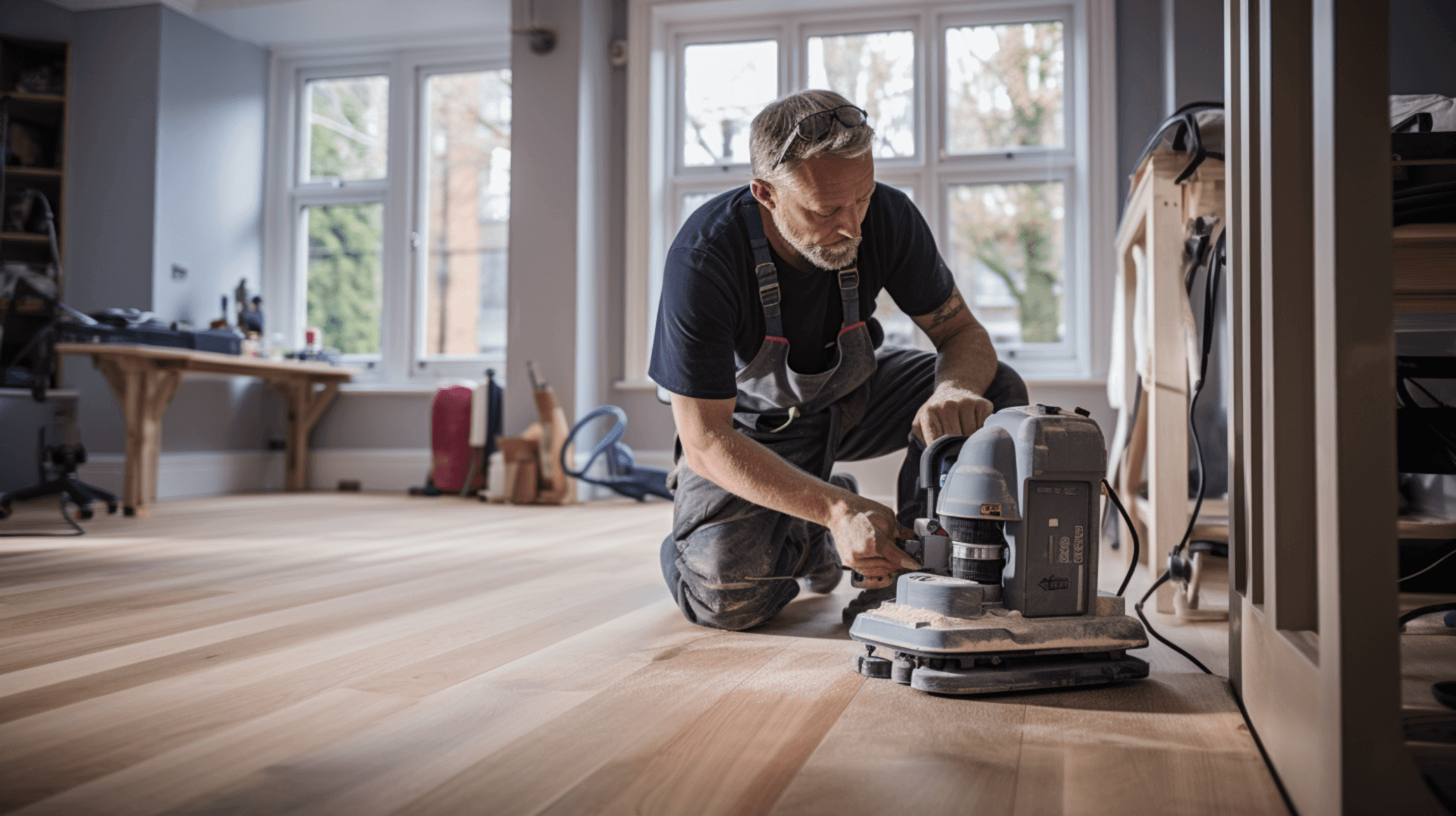
GJP Floor Sanding is the leading provider of professional wooden floor sanding services in London. Home and business owners can get in touch with GJP Floor Sanding for our wooden floor sanding needs by calling our office at 01273 770 499 or visiting our website. When contacting GJP Floor Sanding, customers should provide relevant information about our floor, such as the type of wood, the size of the area to be sanded, and any other specific details that may impact the sanding process.
Once customers have contacted GJP Floor Sanding, we can expect a prompt response from our team of experts. GJP Floor Sanding will provide a free, no-obligation quote and discuss the customer’s requirements in detail. We will also take into consideration factors such as the presence of water or condensate pipes in the sub-floor voids, the presence of fungal growths, and any other relevant considerations to ensure the sanding process is carried out effectively.
GJP Floor Sanding’s team of experts will ensure that the sanding process is carried out with precision and care. We use advanced sanding equipment and techniques to achieve a smooth and even finish on the wooden floor. Throughout the process, GJP Floor Sanding prioritizes customer satisfaction and takes every precaution to minimize dust, noise, and potential damage.
By choosing GJP Floor Sanding for our wooden floor sanding needs, customers can expect a professional and considerate service that delivers high-quality results. GJP Floor Sanding’s expertise, attention to detail, and commitment to customer satisfaction set us apart as the go-to choice for wooden floor sanding services in London.
Please note that while the additional context provided includes various considerations related to the sanding process, it does not significantly impact the main response.
